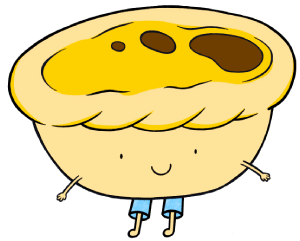Moving to Lisbon? The good news is that you’re headed to one of Europe’s safest capitals, where violent crime is rare and most neighborhoods are perfectly fine for daily life. But like any major city, Lisbon has areas that require extra awareness, especially after dark.
Let’s break down what you actually need to know as an expat planning to make Lisbon home.
The Reality Check: How Safe is Lisbon Really?
Portugal consistently ranks as one of the safest countries globally, and, even as a capital city, Lisbon reflects this reputation.
Though there are neighbourhoods that most locals would avoid, particularly due to crime and drug use, even those would be considerably safer than dangerous neighbourhoods in the US, Brazil, and other parts of the world.
A crucial note on statistics:
Accurate crime data in Portugal can be hard to come by. Not all crimes are reported, and even if they are, it’s hard to get crime statistics in the same way as you can in other countries. Some neighborhoods also carry reputations that may no longer reflect reality due to ongoing gentrification.
Also, don’t let a rundown appearance automatically signal danger—high rises, often with a slightly disheveled appearance, are common in Portugal. This has more to do with the types of buildings found in Portugal, and doesn’t automatically mean unsafe (although it’s a good idea to keep your wits about you wherever you are).
That said, some articles can be quite blasé about crime in Portugal, suggesting that there is only pick-pocketing and occasional break-ins. While violent crime is much rarer than in other countries, it does happen, and even pickpocketing is best avoided if you can.
Areas That Require Extra Awareness
Central Lisbon
Martim Moniz, Intendente, and Anjos These interconnected neighborhoods have historically been very run-down, but they’re rapidly gentrifying. Some would say they’re already gentrified, although homelessness and drug use remains in some places. Here’s what you need to know as a potential resident:
- During the day: Generally fine, with popular restaurants, bars, and cafes
- At night: More caution needed, especially for solo walking. Some areas are worse than others.
- The reality: Many expats live here now, particularly in Intendente, drawn by lower rents and nearby hipster bars and restaurants
Mouraria
- The issue: Can be quite dark at night with narrow, winding streets
- Important for expats: If you’re considering Graça (a popular expat neighborhood), you’ll likely walk through Mouraria and possibly Martim Moniz to get there
Santa Apolónia Station Area
- When to be cautious: After dark, especially around the train station and some streets on the outskirts of Alfama
- For residents: If you’re commuting by train, this might be relevant to your daily route
- The reality: It’s more about being aware of your surroundings than avoiding the area entirely. Many train stations (e.g., Alcântara – Mar can have a sketchy feel, particularly late at night).
Casal Ventoso (now called Quinta do Loureiro)
- The backstory: Social housing area with drug issues
- The reality: Still quite run down, and very unlikely to suit most expats. Some news stories report that drug use has increased in the area again, and extends to areas like Avenida de Ceuta. Rua Maria Pia above has improved considerably, but would be still be too close to those areas for most long-term Lisbon residents.
The Nightlife Areas (Safe but Situationally Aware)
Bairro Alto, Cais do Sodré, Pink Street These are Lisbon’s main party districts—safe during the day, bustling at night, but with specific considerations:
- The good: Vibrant nightlife, historic charm
- The challenges: Crowded streets perfect for pickpockets, drunk tourists, occasional late-night scuffles
- Living here: Many expats frequent these areas but expect noise and crowds, especially Friday and Saturday nights. It’s very common for people to approach you offering to sell you drugs. This is typically oregano or bay leaves, but still makes the area feel sketchier than it needs to be
Pickpocketing hotspots
This include Terreiro do Paço, Baixa, but basically anywhere touristy and especially public transport in these areas. Thankfully, most people never experience pickpocketing. It’s not as common as in Barcelona or Rio, for example.
Suburban Areas: Generally Avoidable
Some Parts of Chelas (particularly Zone J) and Olaias
- Why you might consider it: On the red metro line, potentially cheaper alternative to Parque das Nações
- Reality check: These aren’t tourist areas, but some expats might live here for affordability
Cova da Moura
- Local reputation: Known as Lisbon’s “favela,” though that’s an oversimplification
- For expats: You’re unlikely to accidentally end up here—it’s far from central areas and tourist zones
Amadora (parts of)
- The nuance: Has a historical reputation that’s partially outdated due to urban renewal
- Current reality: Many people, including some expats, move here for good train connections to Lisbon
- Advice: Research specific neighborhoods within Amadora rather than writing off the entire area
Lisbon’s reputation as one of the world’s safest cities is well-deserved. The areas requiring caution are primarily about petty crime and social challenges rather than serious danger. Most American expats, in particular, find Lisbon significantly safer than many U.S. cities they’ve lived in.
That said, nowhere is perfectly safe and many articles on safety in Portugal downplay the possibility that serious crime can occur. Appreciate that you live in a safer city, but don’t let that stop you taking precautions you would take in other cities.


 (Just a few of the places where Portugalist has been mentioned)
(Just a few of the places where Portugalist has been mentioned)